Discover the 12 best places to visit in Kumasi, the capital city of the Ashanti region, which holds a special place in Ghana’s history and culture as the ancient seat of the Ashanti Kingdom. With its rich historical and cultural significance, Kumasi, the heart of the Ashanti Region, is often called “The Garden City” of West Africa due to its abundance of flowers and plants. Before British rule, Kumasi was the capital of the powerful Ashanti Empire, an important civilization in Africa’s history.
Kumasi boasts the most famous attractions that offer visitors a fascinating glimpse into the region’s past and present. From the majestic Manhyia Palace Museum, once home to the Ashanti Kings, to the bustling Kejetia Market, one of West Africa’s largest open-air markets, there’s plenty to explore. The Kumasi Fort and Military Museum, as well as the Cultural Center, provide further insight into the city’s history and artistic traditions. Visitors can also experience the intricate process of making Kente cloth at the Bonwire Kente Weaving Village. Together, these attractions make Kumasi an exciting destination for anyone interested in discovering Ghana’s diverse cultural heritage.
MANHYIA PALACE MUSEUM
The Manhyia Palace holds great significance as the ancestral residence of the Ashanti kings. It forms part of the 12 best places to visit in Kumasi. It’s a grand building that represents the heart of Ashanti heritage and their rich cultural history. Built in 1925 by the 36th Ashanti king, Nana Agyeman Prempeh I, the palace became a museum in 1995.
Today, it’s a fascinating place for visitors to learn about the Ashanti kingdom’s legacy and experience the splendor of Ashanti royalty.
Inside the Manhyia Palace museum, you’ll find a fantastic collection of artifacts and historical objects dating back to the 17th century, when the Ashanti kingdom began. It’s a great chance for visitors to explore the rich cultural and historical heritage of the Ashanti people. There are royal items, traditional clothing, ceremonial stools, and photos showing the power and wealth of the Ashanti kings.
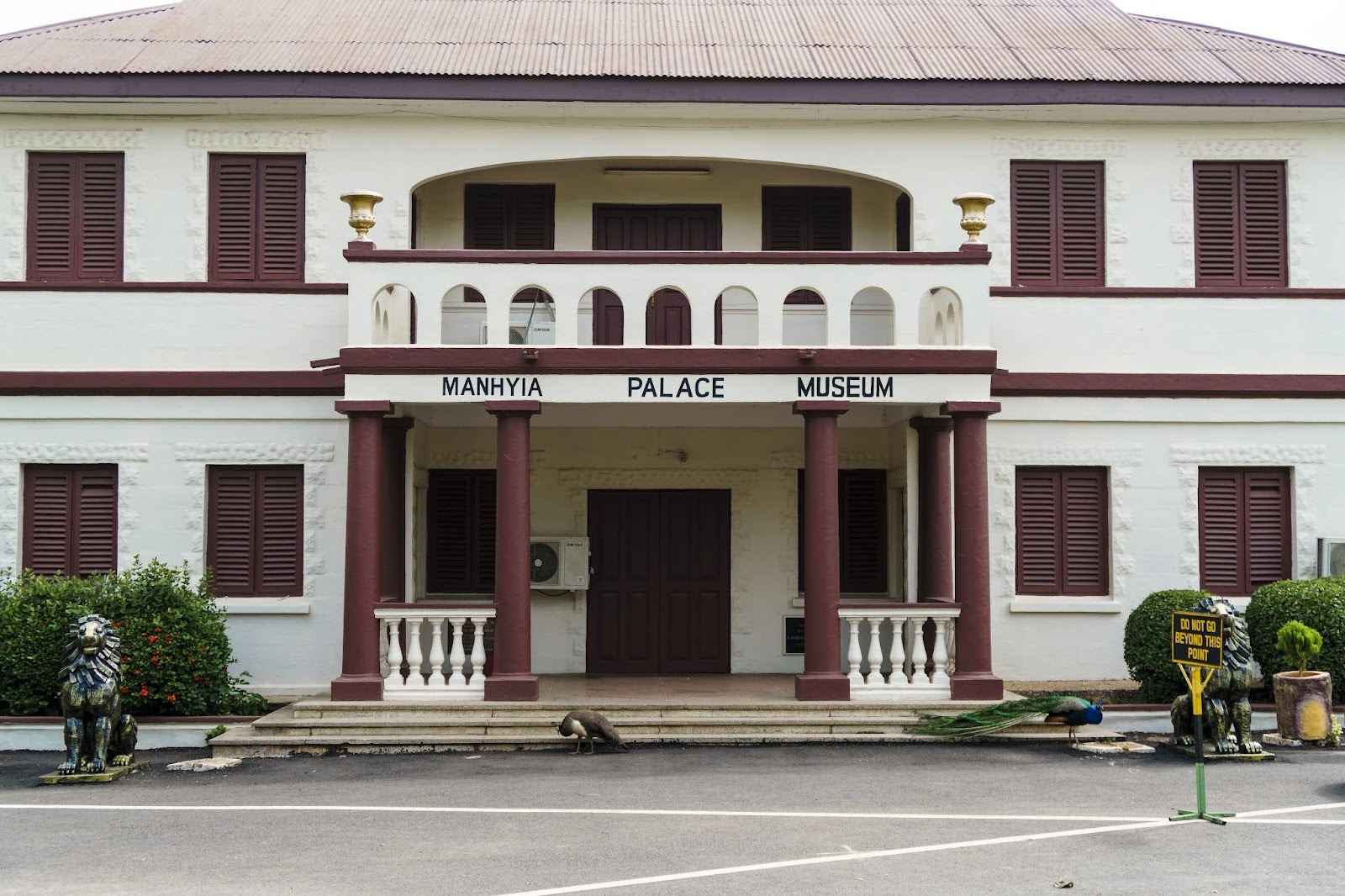
Nearby, visitors can also enjoy the vibrant market and museum, offering a unique cultural experience. The market is bustling with traders selling traditional crafts and food, while the museum showcases the rich history and traditions of the Ashanti people.
KUMASI FORT AND MILITARY MUSEUM
The Kumasi Fort and Military Museum, located in Kumasi, Ashanti Region, Ghana, is a unique military museum in Africa. It was built in 1820 by King Osei Tutu Kwamina to look like a European fort and then rebuilt in 1897 after the British destroyed it. During the Asante Rebellion in March 1900, it became a pivotal site, with 29 Britons trapped inside. It now houses exhibits related to the British-Asante War of 1990 and the Second World War, including weaponry, medals, and photographs.
Today, the Kumasi Fort has been repurposed into a museum that showcases a diverse collection of artifacts and exhibits related to Ghana’s military history. Visitors have the opportunity to explore displays featuring weaponry, uniforms, documents, and other items that provide insights into the region’s military heritage.
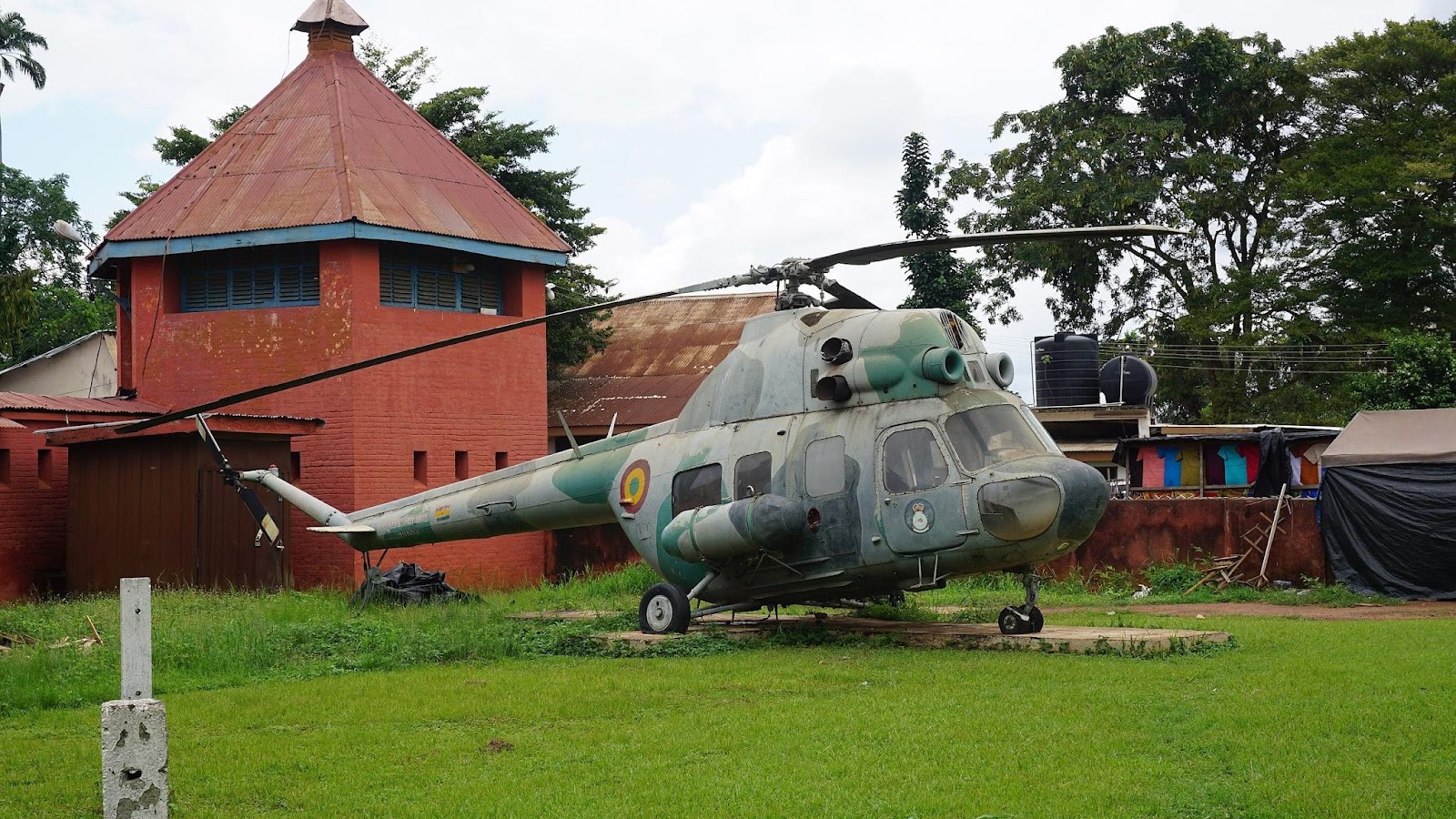
The museum offers a valuable window into the historical context of the Ashanti Kingdom and its interactions with colonial powers. It stands as a testament to the complex history of the region and provides a thought-provoking experience for those interested in the military history of Kumasi and Ghana as a whole. The Kumasi Fort and Military Museum is open daily from 8:00 am to 5:00 pm, except on Sundays and public holidays.
KUMASI ZOOLOGICAL GARDENS
The Kumasi Zoo, located centrally between the Kumasi Kejetia Bus Terminal and the Kumasi National Cultural Centre in the Ashanti Region, is one of the best places to visit in Kumasi. It’s a popular spot in the Ashanti Region and serves as the main national zoo. Established in 1951 and opened to the public in 1957, it has become a popular destination for both tourists and locals, with the majority of visitors being schoolchildren.
The zoo covers 11,000 hectares and houses 162 individual animals from 46 different species, including primates, reptiles, cats, rodents, birds, and a colony of bats protected by the facility. In addition to its role as an educational and recreational space, the Kumasi Zoo serves as a hub for scientific research, particularly in the areas of animal behavior, human interaction, and disease transmission patterns. It also operates breeding programs to conserve endangered species threatened by human activities like logging and hunting.
Whether you love animals, want a fun day with family, or just need some peaceful time in nature, the Kumasi Zoological Gardens is the ideal spot to visit. Here, you can enjoy Ghana’s diverse animal world and help keep our planet’s variety of life thriving.
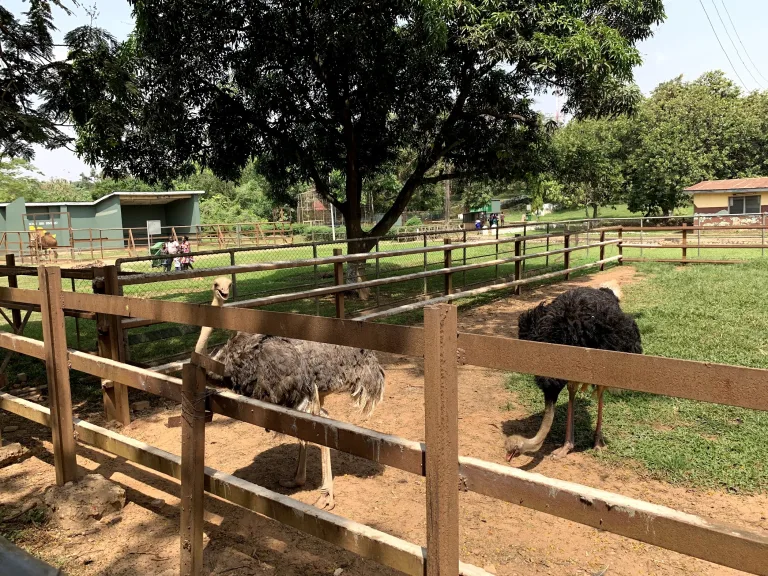
OKOMFO ANOKYE SWORD SITE
The Komfo Anokye Sword Site, one of the 12 best places to visit in Kumasi, is located on the grounds of the Komfo Anokye Teaching Hospital in Kumasi. It houses a 300-year-old sword firmly embedded in a rockface, a central artifact in the rich history of the Asante nation.
A knowledgeable young curator passionately narrates the history of the Asante people, and if you’re lucky, you might even encounter the Asante king, who frequently visits to honor this sacred site.
Exploring the site provides a deep understanding of the origins of the Ashanti Kingdom, and it has been preserved to pass on this history to future generations. The Sword site marks the very spot where the Golden Stool of Asanteman descended to King Osei Tutu I, also known as “Opemsuo,” the founder of the Asante Nation. Okomfo Anokye predicted that this site would be a healing place for millions of people, and it turns out that the Komfo Anokye Teaching Hospital now stands exactly at this significant location.
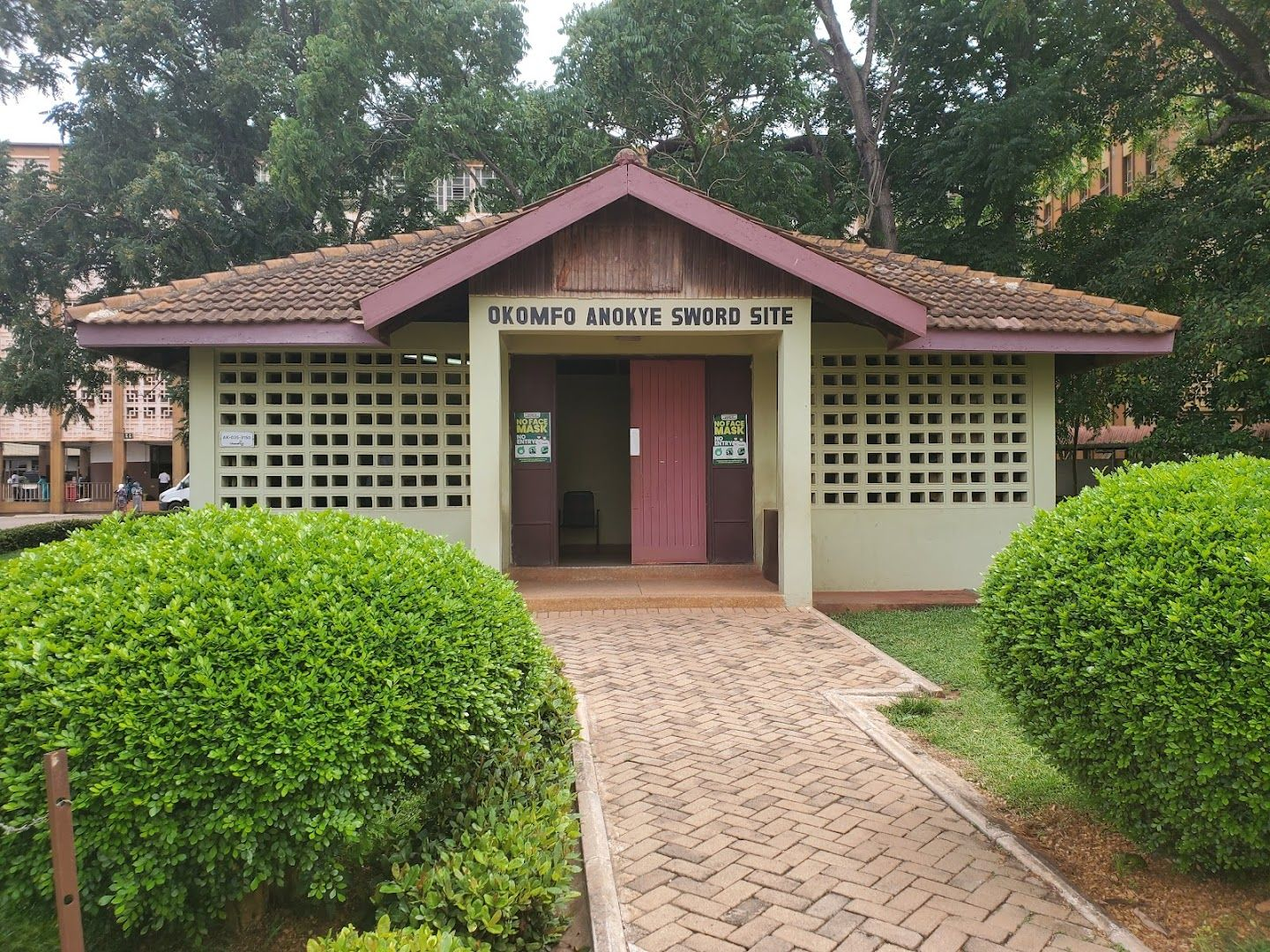
KUMASI KEJETIA MARKET
In the bustling city center lies one of West Africa’s biggest open-air markets, which is among the top tourist sites in Kumasi. It’s a lively and busy place where locals and visitors can dive into the culture of the region. Walking through the market, you’ll be surrounded by a mix of sights, sounds, and smells from all the different stalls and sellers. People are constantly moving around, haggling, and trading.
One great thing about this market is the variety of street food you can find. There’s everything, from tasty grilled meat to hot bowls of traditional soup. If you’re feeling adventurous, you can try local treats like fried plantains, bean cakes, or jollof rice, a popular dish around here. If you prefer a sit-down meal, the market also has some really good restaurants.
They serve up delicious food made with fresh, local ingredients. You can choose from traditional West African dishes or international cuisine.
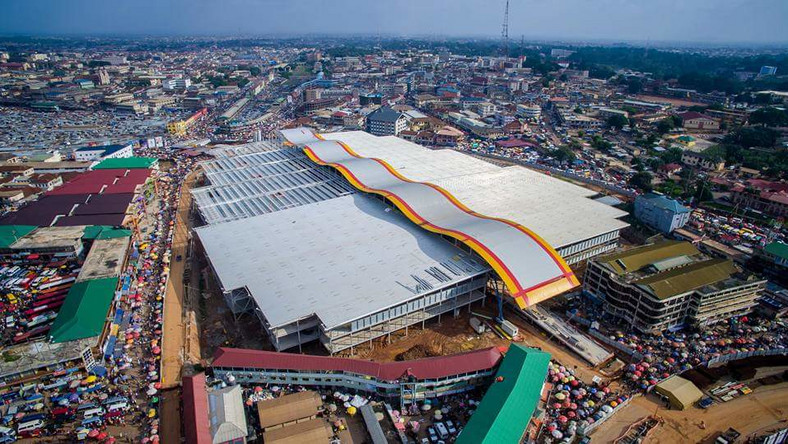
Nearby, you’ll find the Palace and Cultural Center, two must-see attractions. The Palace is a fascinating building that tells the story of the region’s history and culture. The Cultural Center lets you explore local art, music, and dance, giving you a taste of the vibrant culture of the area.
KENYASI TRUBA POND
In the heart of Kenyasi Truba, a quaint village near Kumasi, lies a charming pond that’s one of the best places to visit in Kumasi for nature lovers seeking a break from city life. Surrounded by lush greenery and tall trees, this pond offers a tranquil escape. Its clear waters reflect the vibrant colors of the surroundings, creating a serene atmosphere. Visitors can relax by the pond, watching fish swim and listening to the birds chirp.
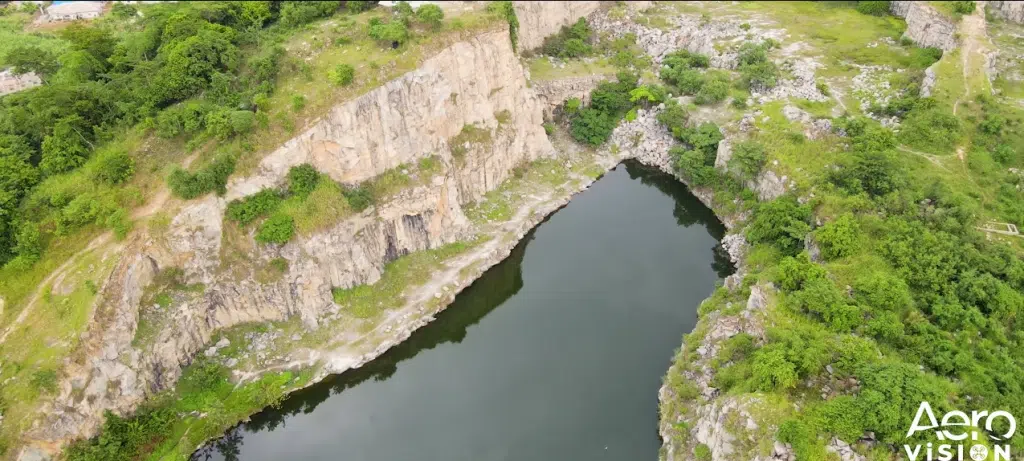
The pond is also home to various birds and wildlife, attracting birdwatchers and nature photographers. The peaceful ambiance, filled with birdsong and rustling leaves, is perfect for meditation and relaxation. Around the pond, there’s a small park with benches and picnic tables where families can enjoy the scenery.
Children can play at the playground while adults unwind. The park is well-kept, and friendly staff are available to assist visitors.
THE OWABI WILDLIFE SANCTUARY
The Owabi wildlife sanctuary is located in Kumasi. It is a bird sanctuary that is also home to many butterflies, over 140 species of birds, and various animals like monkeys, bushpigs, bushlocks and antelopes
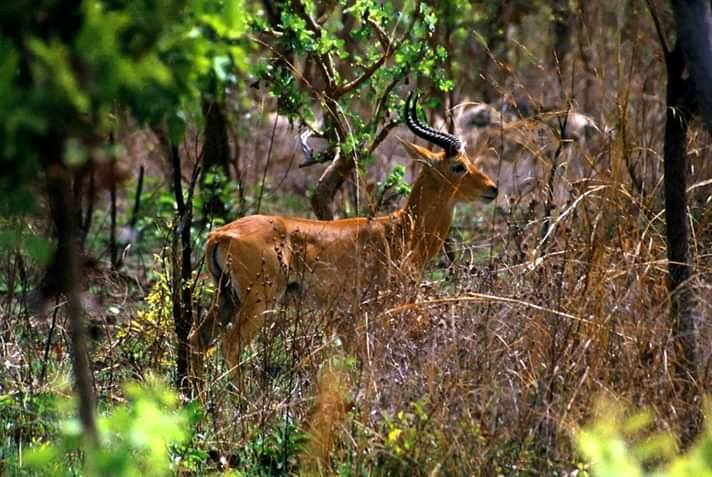
The Owabi Wildlife Sanctuary is full of native birds and some migratory ones too, totaling about 161 species. The Sanctuary offers beautiful scenery, perfect for picnics and birdwatching. Visitors also have the chance to see monkeys and enjoy activities like boating and fishing, making it a great tourist spot. It’s also a fantastic place for educational trips and ecological studies, starting at Kumasi Zoo, where trained staff provide guided tours.
You can take a guided walk through the sanctuary from the zoo and even visit Owhim to see the bead industry. At Owabi, you can also tour the waterworks with the station officer to learn about the water treatment process. To get to Owabi from Kumasi, take the Kumasi-Sunyani road from the Akropong junction.
KUMASI CITY MALL
The Kumasi City Mall is a shopping mall located on the Asokwa Interchange off Kumasi Adum/Labor road in Kumasi, Ghana. It is the first of its kind in the city and is among the leading places to go in Kumasi. The mall is a leading shopping destination in Kumasi and the entire Ashanti Region, being one of the largest and most well-stocked malls in West Africa.
It offers a variety of goods and services, including groceries, lifestyle items, beauty products, electronics, fashion, pharmaceuticals, gifts, jewelry, banking services, cinemas, restaurants, and entertainment options for children.
Kumasi City Mall caters to families, young adults, and professionals, providing a place to shop, dine, and unwind. It’s not just a shopping center; it’s a multifaceted entertainment hub with diverse activities for visitors to enjoy.

LAKE BOSOMTWE
Lake Bosumtwe is the only natural lake in Ghana, situated in a very old impact crater about 10.5 kilometers (6.5 miles) wide. Located approximately 30 kilometers (19 miles) southeast of Kumasi, the main city in Ashanti, it’s one of the 12 best places to visit in Kumasi. People love to visit this area for fun activities.
Long ago, people told a story about Lake Bosomtwe being created in 1648. A hunter named Akora Bompe was chasing an antelope called “Otwe” when he accidentally injured it. The antelope ran and disappeared into a small pond. Shocked, the hunter, Akora Bompe, decided to stay by the pond and never went back to his town, Asamang. He named the place “Bosomtwe,” which means “antelope god” in English. He believed the water was a god that saved the antelope’s life.
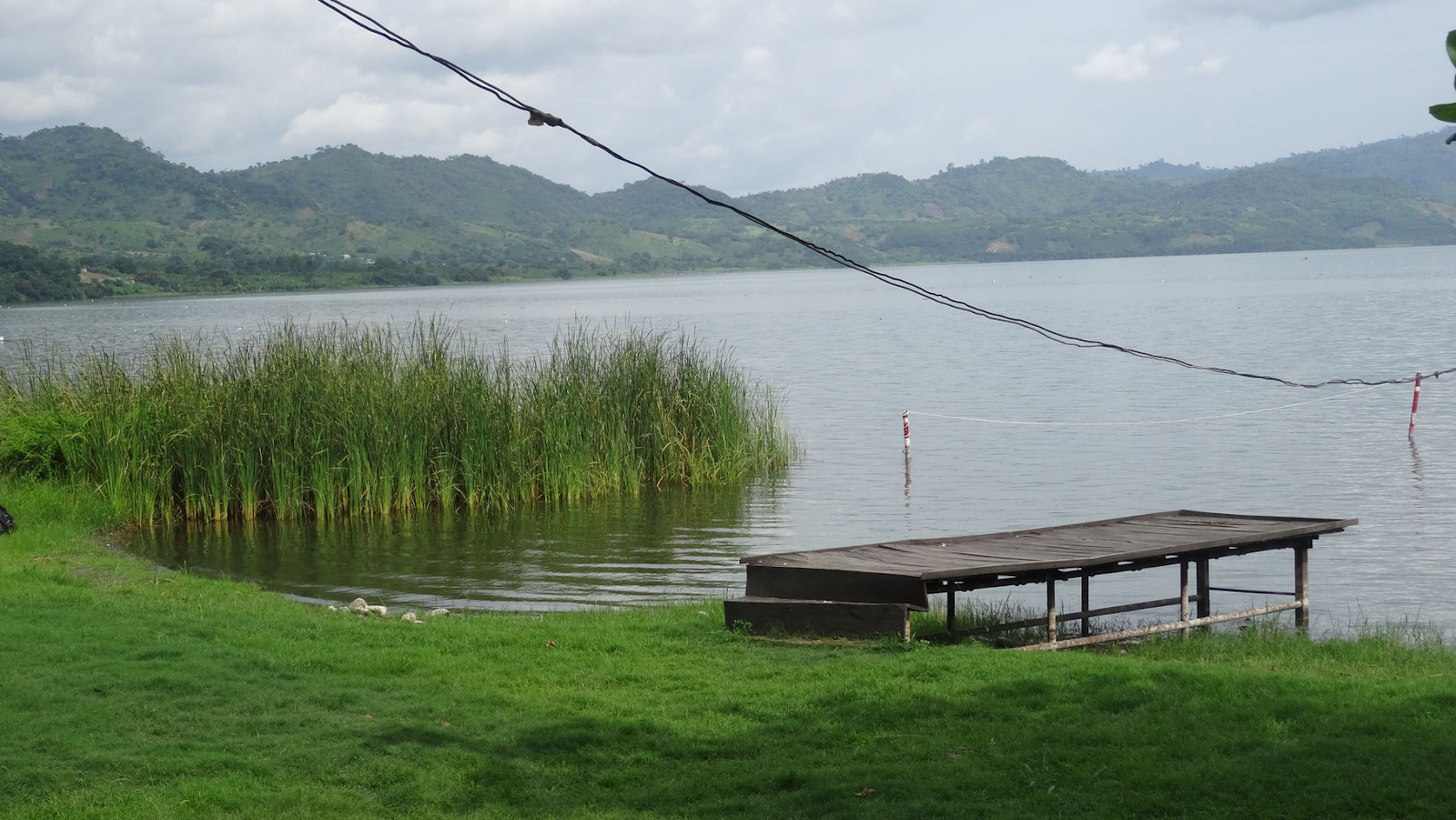
Around the lake, each village has its own special place called a shrine or fetish grove. When Christianity came, some people stopped believing in these traditions, but many still worship these gods for help during tough times or against illnesses. Currently, around Lake Bosomtwe, about 23,000 people live in 27 communities. Each village has its own shrines, and many people visit them to seek spiritual help.
BONWIRE KENTE WEAVING VILLAGE
Bonwire, found along the Kumasi-Mampong Road, is famous for Kente weaving. The town is known to be one of the best places to visit in Kumasi because of its vibrant traditional fabric, kente, which is often worn during important events and celebrations in Ghana. People mostly wear their finest kente clothes to match the mood of the event.
Kente is not just worn because it looks great; it’s also loaded with symbols. There are more than 300 patterns, each with its name and meaning taken from proverbs, historical events, important leaders, and precious plants.
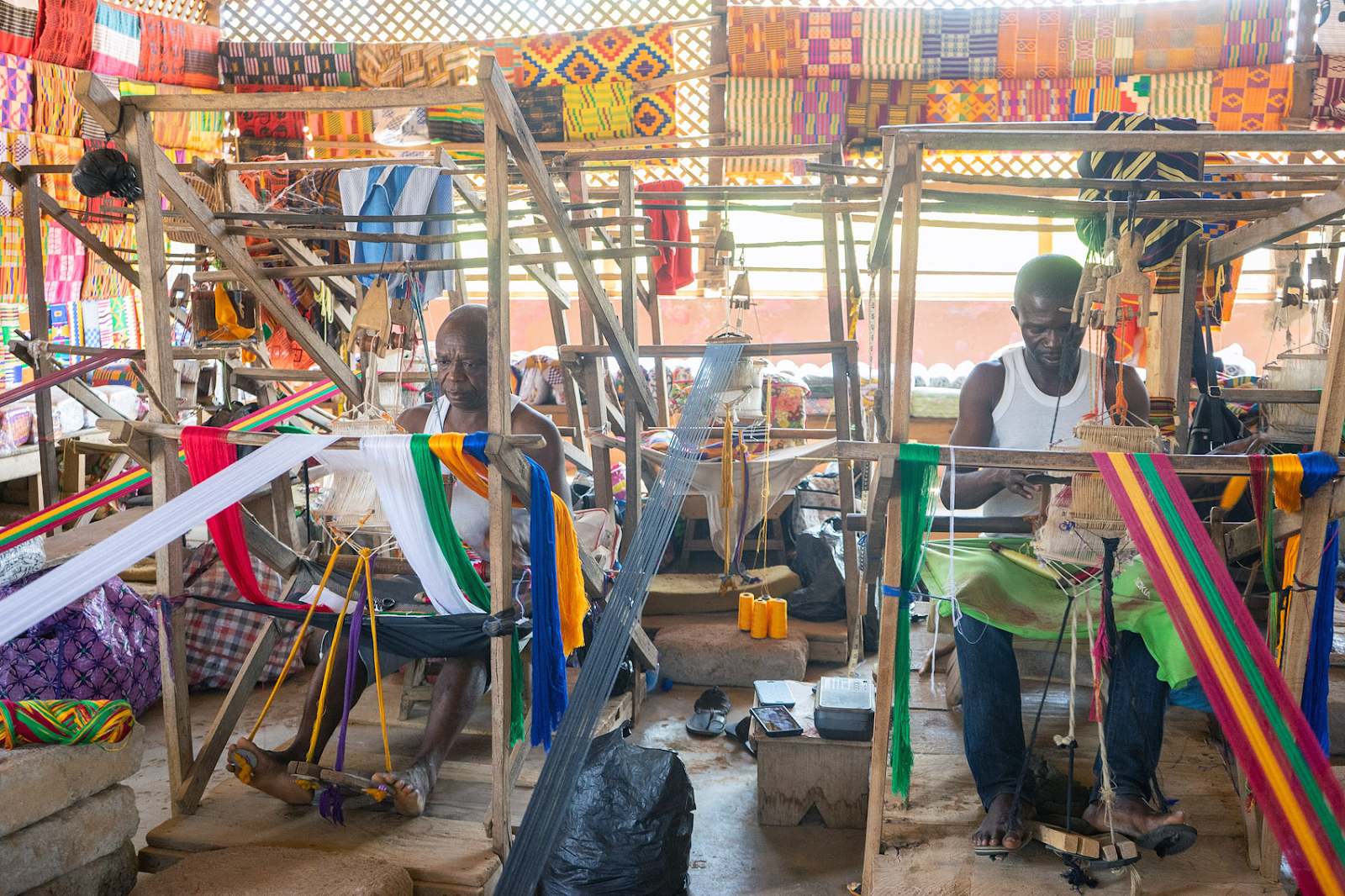
Kente was crafted by the Asante people around the 17th century. It has its roots in the rich weaving traditions of Africa dating back to around 3000 BC. Legends and history intertwine in the origin of Kente. According to legend, two friends from Bonwire learned weaving techniques from a spider spinning its web. Inspired, they weaved a beautiful raffia fabric and shared their tale with Nana Bobie, who relayed it to the paramount chief of the Ashantis, the Asantehene.
The Asantehene embraced the fabric, adopting it as the national cloth for special occasions like funerals, festivals, naming ceremonies, and weddings. Over time, the production of Kente improved, but the name remained, eventually becoming “Kente.” It’s believed that Kente originated from Bonwire, a bustling settlement with numerous Kente weavers.
BABA YARA STADIUM
Baba Yara Stadium in Kumasi, Ghana, is important for sports fans and people interested in the region’s culture. It’s a huge stadium named after famous Ghanaian footballer Baba Yara. The stadium is where the Kumasi Asante Kotoko football club plays and hosts many national and international matches.
The stadium is more than just a building; it’s a lively place where events and sports matches come to life. It’s filled with excitement as fans gather to support their favorite teams, celebrate victories, and enjoy the thrill of competition. With its large seating areas, lively atmosphere, and modern facilities, the stadium gives athletes a great stage to show off their skills and lets fans enjoy the spirit of sports.
Whether it’s the loud cheers or the energetic atmosphere, the stadium brings people together, creating lasting memories and a sense of wonder for everyone involved.
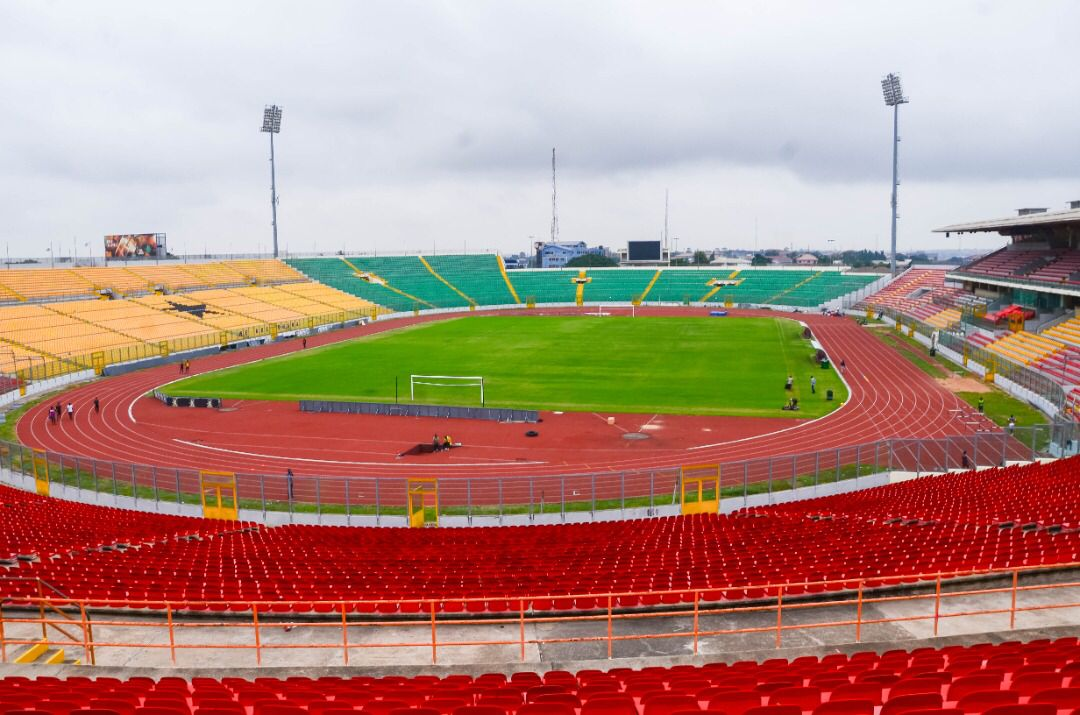
Besides sports, Baba Yara Stadium is near lively festivals and temples that add to Kumasi’s culture. One example is the Akwasidae festival, celebrated by the Ashanti people to honor their history and traditions. During this festival, locals gather at the royal palace next to the stadium to honor their ancestors and chiefs.
NTONSO ADINKRA CRAFT VILLAGE
Ntonso is a town in the Kwabre East District of the Ashanti Region, noted for its Adinkra crafts. Ntonso is where adinkra cloth comes from, and it’s the only place in Ghana where they make traditional adinkra from scratch. Adinkra is well-known for its symbols and wise sayings.
Originally, it was only worn at funerals in the Ashanti Region and was mostly black, brown, or red. But now, it comes in all colors and is used all over Ghana.
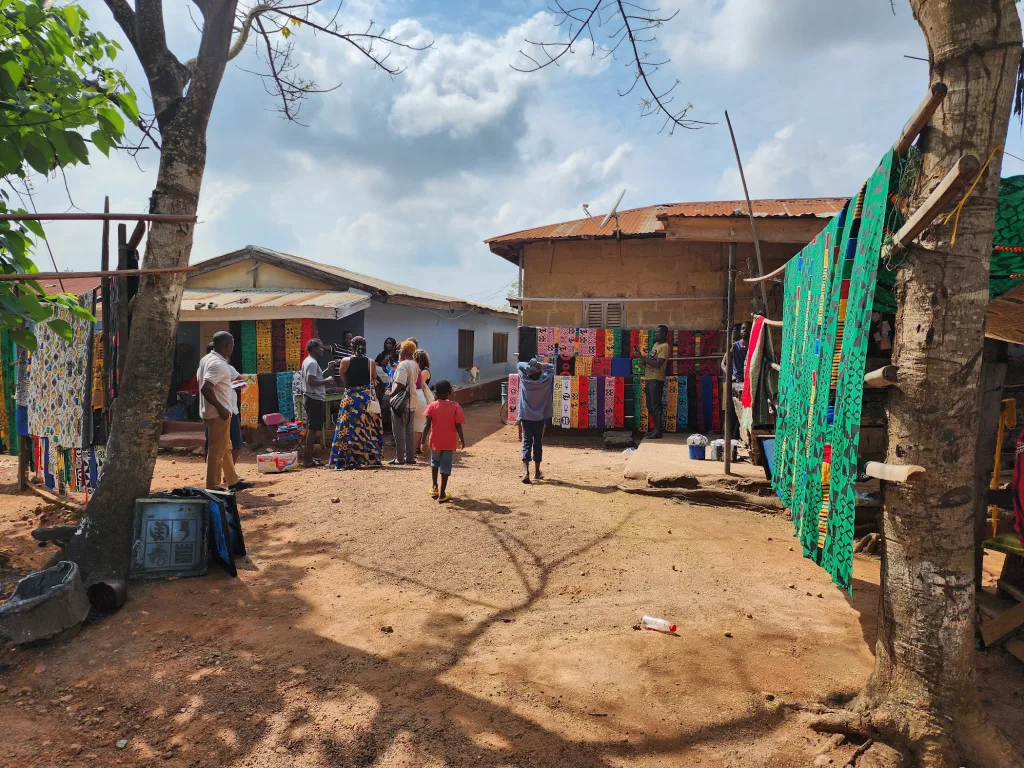
Ntonso has a new visitor center and offers official guided tours. During a tour, visitors can see how adinkra is made, including preparing dyes, dyeing cloth, stamping adinkra symbols, and embroidering stamped cloth.

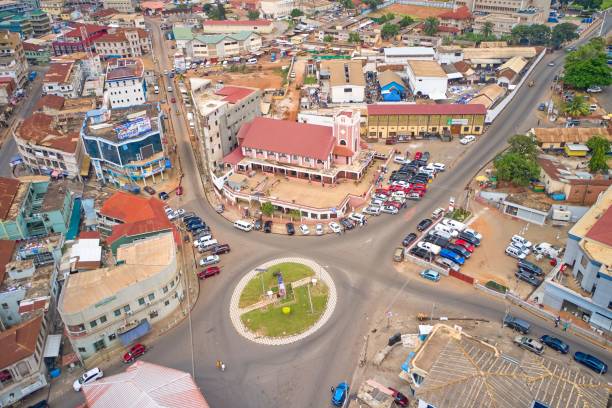



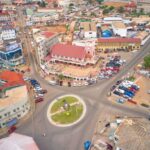

[…] Okomfo Ankoye Sword Site […]